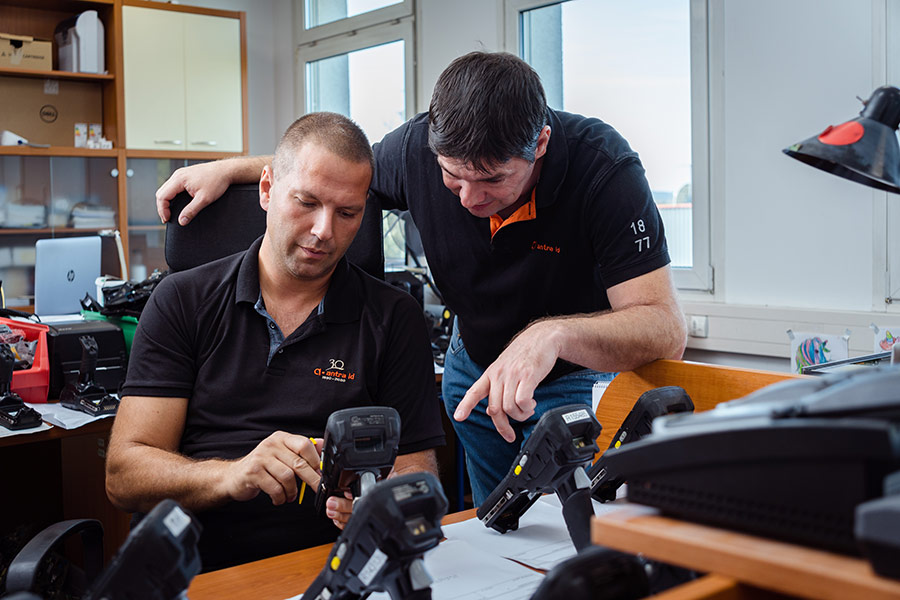It may seem strange, but many companies do not carry out an inventory of fixed assets or only do so sparingly.
The range of excuses is quite broad: we don’t have the time, we don’t have the IT support, we can’t shut down for days, etc. In these businesses, inventory is only conceptual, and it is a huge risk if there is no real control over the assets. Inventory, done out of habit, on a “we’ve done it before and everything was fine” basis, can only prevent damage to the business on a case-by-case basis.
János Pesti, IT manager at Antra ID Ltd., spoke to TechMonitor readers about the possibilities of improving fixed asset inventory.
How do companies currently view the fixed asset inventory process?
János Pesti: Many people see it only as a legal requirement, but if you think about it, this stock is a company’s fixed asset. The inventory process is relatively simple; you have to count the assets in the company. But this immediately creates problems: the inventory taker does not always recognize the asset itself, and even if he does, he may be unable to distinguish between two fixed assets, even though they may be very different in value.
Workers often put the tools they use back in the wrong place. This process causes randomness due to infrequent inventory, which disrupts inventory management and hinders the efficiency of subsequent operations.
If the assets are not marked, then it is necessary to determine which fixed assets correspond to which fixed assets at the time of inventory. This is no longer a blind inventory because there is a lot of data to share with the inventory taker, and he may decide to make up any shortfall. For a smaller company with relatively few assets, this is not a problem, but this process can prove to be very challenging for a few thousand or hundreds of thousands of items.
The inventory itself can be done traditionally, with inventory workers writing down what they have found and passing the lists to the finance team, who try to match what is on the books with what is written down. The lion’s share of the work then falls to the finance team, where a hopeless battle begins. I think this can only work for a very small number of assets. If they put out an inventory list saying look for this and that, which is a controlled inventory, the reality may not come out.

How have companies tried to improve the efficiency of inventory management so far?
There must be a way to identify each asset. Give yourself barcode identification. That’s a good idea; the problem here may be the physical finding of the barcodes. If the barcode is stuck in the wrong place, it already slows down the physical process of inventorying tremendously. Wherever possible, these barcodes should always be placed on a visible surface, but they are therefore exposed to all kinds of damage physical and chemical influences. Thus, many assets cannot be identified by barcode by the end of the inventory, and the search begins. Many assets are then scrapped for convenience, which leads to accounting problems because it may later turn out that they should not have been scrapped. After all, they are in use, perhaps in connection with a tender. Mid-year, they want to activate something on it, or it is being maintained, and then it turns out that it has been ‘technically’ scrapped. Here, we can feel that, for smooth operation, the physical asset stocks and the book stocks must be in harmony.

What trends have emerged in the field of stock control in recent years?
Companies suddenly become sensitive to their capital equipment inventories as they look twice at spending. If the company already has an asset, they don’t buy another; they want to increase its utilization. This is a natural and acceptable good stewardship approach, but at this point, an annually reviewed inventory is usually not enough. Quite accurate stock records are needed, which is the opposite of the other trend: minimizing staff numbers.
We are seeing more and more companies asking for more accurate statements and also witnessing the breakdown of assets by area. Department A may purchase an asset, but the inventory may show it is in area B. If the asset has been transferred to another site, this should also be reflected in the books.
Most of these problems can be avoided or significantly reduced with modern technologies. It is very important to stress that there will always be problems, but the scale of the issues is different.
How does digitization fit into the modernization of stock records?
Rising costs are not conducive to companies introducing new products and services, so they are trying to streamline their internal processes, which digitalization dramatically helps. More and more companies, including smaller ones, are recognizing the importance of digitalization. Effective asset and inventory management is the cornerstone of successful logistics, with the controlled movement of goods and materials key to optimizing operations, mitigating risk, and creating a seamless supply chain.
Antra ID has created a revolutionary new solution called Instant Inventory Solutions to address the challenges of incorrect inventory management and simplify warehouse operations. With this technology, companies can get a real-time view of their fixed asset inventory status, optimize inventory management, and increase efficiency, accuracy, and profitability.
How does Instant Inventory Solutions work?
Antra ID’s instant inventory solution is designed for companies to quickly inventory fixed assets, allowing businesses to control their assets more efficiently. This system consists of an asset identification and a robust data collection process. Its primary mission is to support high-speed inventory with advanced technology. The established process relies heavily on the radio identification offered by UHF RFID systems but also supports traditional barcode and manual data collection.
The system is scalable, which can be used to create small and large systems. A small system typically consists of 1 to 5 mobile devices with 100 to 2,000 objects. An extensive system can be imagined with up to 300,000 asset contingents and 200 mobile assets in inventory simultaneously, involving nearly 500 people.

Key features of Antra ID Instant Inventory Solutions:
- RFID technology for a smooth and fast inventory: RFID tags are installed on the devices, enabling and supporting the high accuracy and speed of the blind inventory process.
- RIFD Antennas for real-time monitoring automatic data collection for up-to-date information on the location, status, and movement of assets, e.g., movements between buildings and furniture storage.
- Automated alerts that immediately notify the inventory team of unauthorized or incorrect movements, ensuring that assets are quickly returned to their designated location.
- Comprehensive data management, focusing on the physical asset itself and the physical processes. A centralized data repository that can assist with real-time tracking, asset usage patterns, employee accountability, and potential process improvements.
Through real-time asset tracking and practiced inventories, businesses receive comprehensive reports and analysis, enabling them to make data-driven decisions, identify operational gaps, and develop strategies for continuous improvement.
Techmonitor: Molnár László



